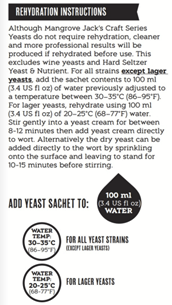Hello everyone,
Last night I made a patch of yeast. I think I did all the steps correctly, except for the final which was rehydrating the yeast. I used M05 mead yeast and heat some water to 27 degrees celcius. I noticed that the yeast didnt seem like it was active, but i didnt gave it much thought and poured it in the rest of the mx.
So, after some time without any bubbles i found that the manufacturer recommends rehydrating the yeast to a mixture with 40 degrees celcius.
Now that 12 hours have passed, there are some bubbles, but not nearly as many as you would expect.
Should i buy a new yeast packet, or are there any other solutions?
Last night I made a patch of yeast. I think I did all the steps correctly, except for the final which was rehydrating the yeast. I used M05 mead yeast and heat some water to 27 degrees celcius. I noticed that the yeast didnt seem like it was active, but i didnt gave it much thought and poured it in the rest of the mx.
So, after some time without any bubbles i found that the manufacturer recommends rehydrating the yeast to a mixture with 40 degrees celcius.
Now that 12 hours have passed, there are some bubbles, but not nearly as many as you would expect.
Should i buy a new yeast packet, or are there any other solutions?


































![Craft A Brew - Safale S-04 Dry Yeast - Fermentis - English Ale Dry Yeast - For English and American Ales and Hard Apple Ciders - Ingredients for Home Brewing - Beer Making Supplies - [1 Pack]](https://m.media-amazon.com/images/I/41fVGNh6JfL._SL500_.jpg)























